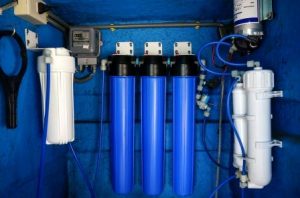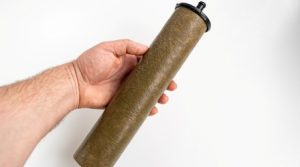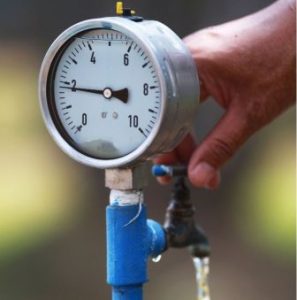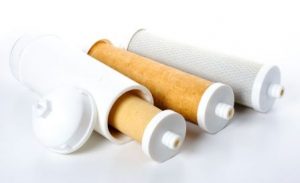According to WHO, contaminated drinking water results in 485,000 diarrheal deaths annually. That’s disturbing, isn’t it?
Therefore, you must choose the right water purifier for your home because there are many harmful substances in the water that can lead to various diseases. But how? Don’t worry, we will assist you!
To make it easier for you, we researched the different water filtration systems and have concluded that reverse osmosis or RO is the most effective method to purify contaminated water.
In this article, we will inform you everything you need to know about the RO water purification system – its history, benefits, drawbacks, and much more!
What Is Osmosis?
Before we move on to reverse osmosis, let us briefly explain to you what osmosis is. Simply put, osmosis is the principle by which the water flows from a lower concentration to a concentration through a semi-permeable membrane naturally. This membrane allows small particles to penetrate it and traps the larger particles.
What Is Reverse Osmosis?
Now that you know about osmosis, let’s understand what reverse osmosis is. It is a process in which the water is pushed through a semi-permeable membrane by external pressure.
The size of the pores in this membrane is very small (0.0001 microns). This means that reverse osmosis is very effective in eliminating the harmful bacteria and viruses from the water, which other water purification systems aren’t capable of doing.
History Of Reverse Osmosis
The history of reverse osmosis traces back to the 18th century. The use of semipermeable membranes was first demonstrated by a French Physicist named Jean Antoine Billet in the year 1748.
The method was just limited to the laboratory for almost 200 years. In 1949, researchers at the University of California examined the effectiveness of semi-permeable membranes in seawater desalination. Years later (in the mid-1950s), they were able to produce fresh water out of saltwater. However, it wasn’t a commercially viable method.
It was only in the year 2001 when a final breakthrough was made by a scientist named John Cadotte. Thus, over 15,000 desalination plants were installed around the world. Today, reverse osmosis makes up 80% of desalination plants globally.
The Parts Of An RO System

an RO system usually consists of the following parts:
- Line valve: It controls the water entering the RO system from the main supply.
- Reverse osmosis membrane: It is a membrane that separates water and contaminants.
- Filters: The reverse osmosis system filters the water repeatedly before it reaches the pressure tank. The water is filtered as it enters the storage tank from the main supply by the pre-filters (sediment filter). Before it is used, the water is treated once again by the post-filters (post-carbon filter).
- Storage tank: Filtered water is stored in a storage tank. These tanks come in various sizes. However, some RO systems do not require a tank.
- Check valve: It ensures that the filtered water does not flow back from the storage tank due to the pressure.
- Flow restrictor: While water passes through a membrane under pressure, the pressure is adjusted to ensure that all pollutants are trapped. This pressure is controlled by the flow restrictor.
- Drain line: Lastly, the impurities trapped in the water are expelled from the RO system through the drain line.
The Stages Of RO Filtration System
Reverse osmosis can effectively remove harmful bacteria, pathogens, viruses, clay particles, unwanted minerals, and other contaminants from water to make it fit for drinking. You can either buy an RO water purifier or set up a reverse osmosis system in your kitchen (under the sink).
RO systems have a multistage purification process:
- Sediment Filter – Before passing through the semi-permeable membrane, the water first travels through the sediment filter. At this stage, all solid pollutants such as rust and sand, etc., are removed from the water.
- Activated Carbon Filter – At this stage, contaminants that can damage the semi-permeable membrane are eliminated. This includes chlorine, pesticides, and small particles that may pass through the semipermeable membrane. Reverse osmosis alone can’t remove chlorine and due to this reason, an activated carbon filter is installed in an RO system.
- Post Carbon Filter – Finally, the water travels through a post-carbon filter to enhance its color and taste.
- Reverse Osmosis Membrane – When the water is free from all large sediments, it finally passes through the semi-permeable membrane. This membrane contains numerous small pores that allow only pure water to pass through when pushed into the membrane.
What Contaminants Can An RO System Remove?
An RO water purification system can remove most of the contaminants from the water. Some of them are:
- Dust Particles
- Arsenic
- Rust
- Lead
- Mercury
- Chromium
- TDS (Total Dissolved Solids) like sodium, magnesium, calcium, potassium, chlorides, and sulfates, etc.
Is Reverse Osmosis Water Safe To Drink?

The short answer is – yes! RO water is considered the safest and best water for drinking. Most RO filtration systems are capable of purifying water with even high (300-500 mg/L) TDS levels.
They are highly effective in removing certain harder-to-detect contaminants that can be hazardous to your health, such as lead and arsenic.
Moreover, RO systems do not pose any serious health hazards as they offer chemical-free water purification. In fact, the use of reverse osmosis water can help reduce the health risks associated with potentially harmful substances that may be present in drinking water.
Benefits Of RO Water Filtration System
Here are some reasons why you might want to consider an RO water filtration system for your home over other filtration systems:
1. It Offers Best Quality Of Water
RO water purification systems can successfully eliminate up to 95-99% of containments present in the water. They are very effective in removing the dissolved solids from the water, such as arsenic, fluoride, and lead, etc., unlike the other water purification systems.
2. It Enhances The Smell, Colour, And Taste Of Water

Chlorine and fluoride present in water can impact its smell and taste. But with an RO purification system, you don’t have to worry anymore!
While the activated carbon filter in the RO water purification system eliminates the chlorine and odor from the water, the post-carbon filter enhances its colour and taste.
3 It. Requires Less Space
As compared to other water purification systems, RO systems come in compact designs. This means, they don’t require much space and can be easily installed even in small kitchens.
4. It Is Completely Automated
RO water filtration systems are fully automated and do not require a lot of maintenance. You only have to change the semi-permeable membrane and filter cartridges once in a while. This will save your time and energy!
Drawbacks Of RO Water Purifier
Now that you’re familiar with the benefits of the RO water filtration system, let’s also have a look at its drawbacks:
1. It Wastes A Lot Of Water
The biggest disadvantage of the RO water filtration systems is that they waste a lot of water. According to the U.S. Environmental Protection Agency (EPA), RO filtration systems waste up to three times more water than they purify.
2. It Can Get Clogged

If you do not properly maintain your RO water filter system, its pores may become clogged over time and render it less effective. Therefore, you need to get a pre-filter installed in your RO system to prevent clogging.
3. The Water Filtration Is Time-Consuming

Because RO filtration systems use water pressure to push water through a semi-permeable membrane, this process can consume a lot of time.
4. It Is More Expensive

RO water purification systems are more expensive as compared to other water filtration systems. They have high costs of installation. Moreover, they consume more power and thus, can increase your electricity bill. So if you have a tight budget, an RO water filtration system will not be suitable for you.
Factors That Can Affect an RO Filtration System
Following are the factors that can affect the performance of an RO filtration system:
Quality
RO purification systems are made of different parts, which is the reason for differences in their costs. Usually, the cheaper models are not very effective as compared to the expensive models. Moreover, they have a shorter lifespan. So avoid going for the cheaper models and opt for the best RO water purifier instead.
Water Pressure

The pressure of water is another factor that can affect the performance of RO systems. There must be adequate pressure to push water through the semipermeable membrane. If there isn’t enough water pressure, then a separate water pressure pump is required to increase the water pressure.
Water Quality

The quality of water can also impact the performance of RO purification systems. If the water has very high TDS levels (over 2500 ppm), then the domestic RO water purifiers may not function well. In such cases, you will have to install a commercial RO system.
Things To Consider When Choosing an RO System
If you’re still not sure if an RO water filtration system will best fit your needs, consider these 5 things:
Water Pressure
RO can only function when is enough pressure to push water through the semi-permeable membrane. So you should opt for an RO system only if the water pressure at the point of installation is at least 60 PSI. Otherwise, you will need an additional water pressure pump.
Water Source
You have to take into account the source of your drinking water. This is because contaminants in your water source can affect the filtration process. So if your water source contains many impurities, you should opt for the commercial RO system.
Replacement Filters

RO systems require frequent maintenance to prevent clogging. Therefore, you should change the filters frequently depending on the model.
Storage Capacity
Different RO water purifiers have different storage capacities. Some are ideal for small families, whereas others are suitable for large families. You should choose an RO purifier that can store enough water for your family.
Electricity

When it comes to water filtration systems, electricity plays a vital role since most of them need electricity to function. an RO system can’t function without electricity. So if there are regular power cuts in your area or insufficient power supply, then an RO system will not be suitable for you.
FAQs
What Is the ideal TDS level for drinking water?
According to WHO, a TDS level less than 300 mg/L is considered ideal for drinking.
How often do I need to change the RO membrane?
It is better to change the RO membrane every 2-3 years. Also, depending on the amount of water and sediment passed through it, you need to change it.
What is not removed by the RO filtration system?
RO filtration systems do not eliminate contaminants like pesticides, fungicides, and herbicides, among others. Moreover, they don’t remove dissolved gases such as hydrogen sulphide, oxygen, and carbon dioxide, etc.
How long do RO systems last?
If you maintain it properly, your RO system can last for 2-5 years, depending upon the model and quality of water.
You May Also Like To Read:
How To Purify Borewell Water At Home?
How To Convert Hard Water Into Soft Water?
Conclusion
By now, we hope that you have all the relevant information about RO filtering systems. They are, undoubtedly, very effective when it comes to the removal of contaminants from the water.
However, you need to invest in a good quality RO system and also properly maintain it for best results. In addition, consider things such as your water source, pressure, power supply and family size, etc. before going for an RO system.
If you have any other questions, please type them comment section below. We will be delighted to help you!


